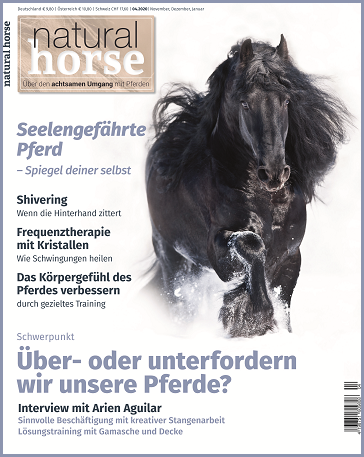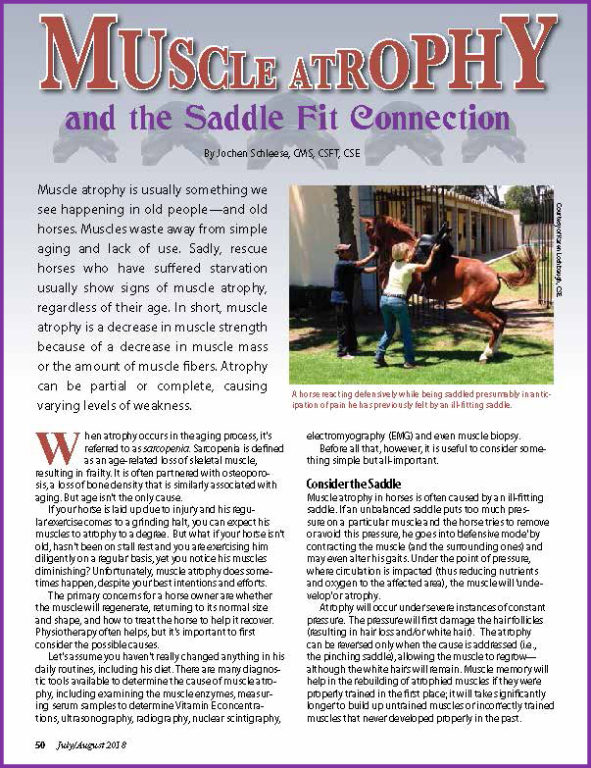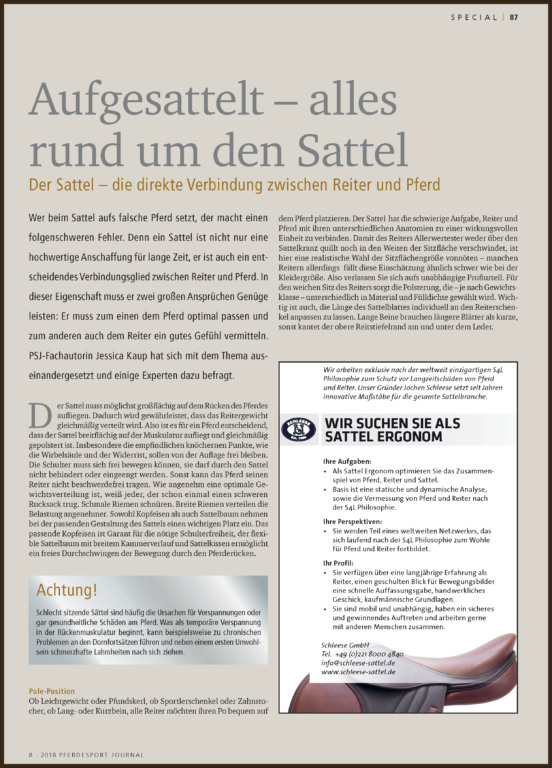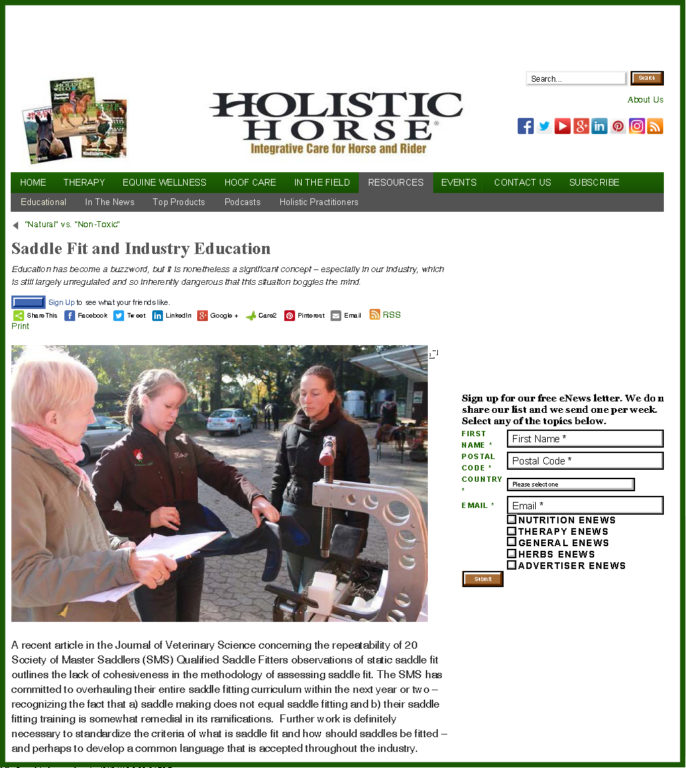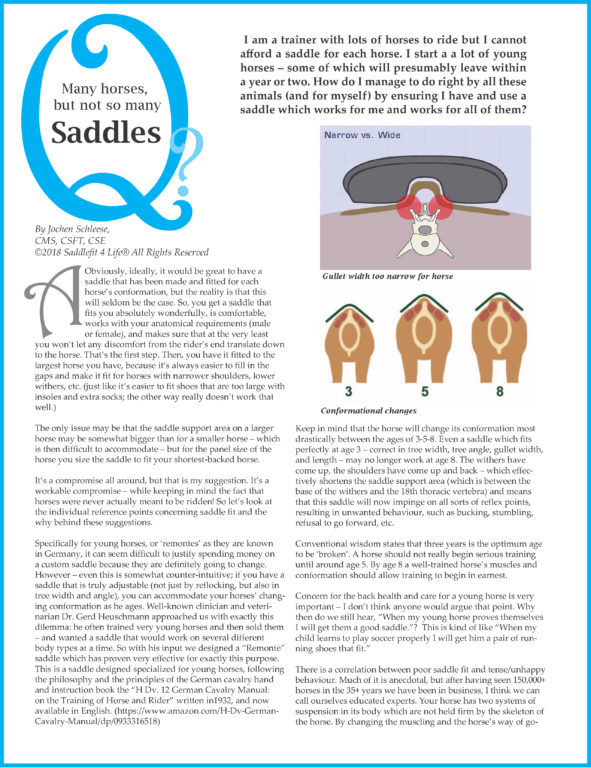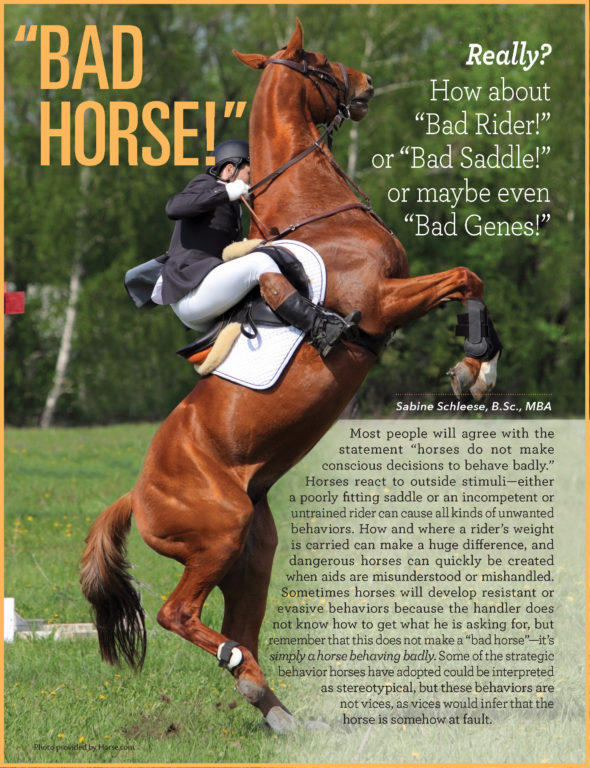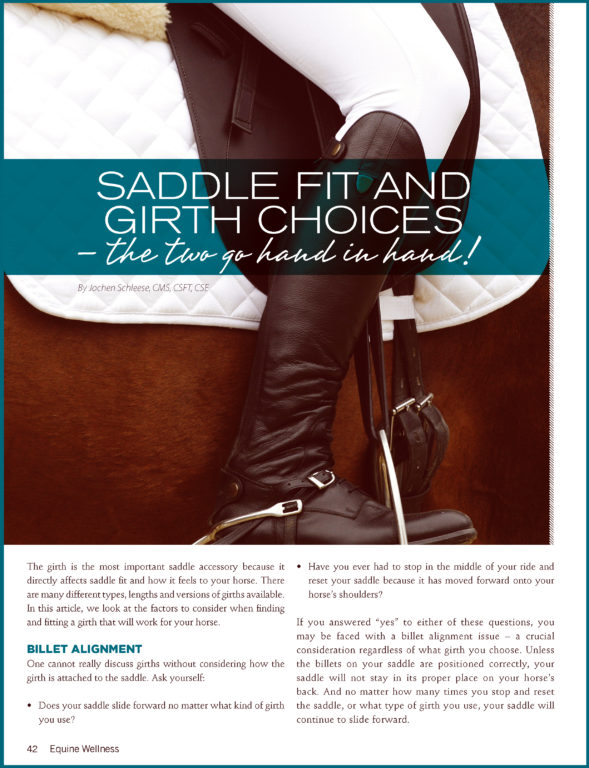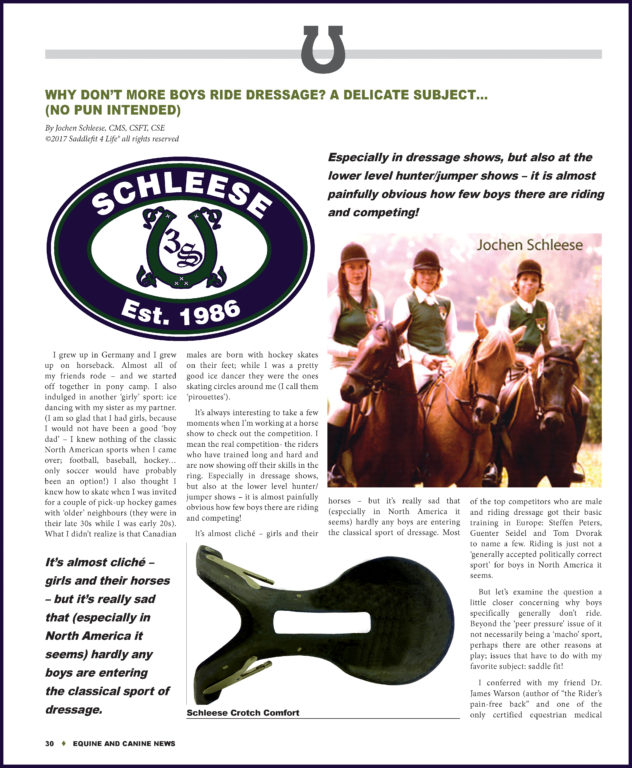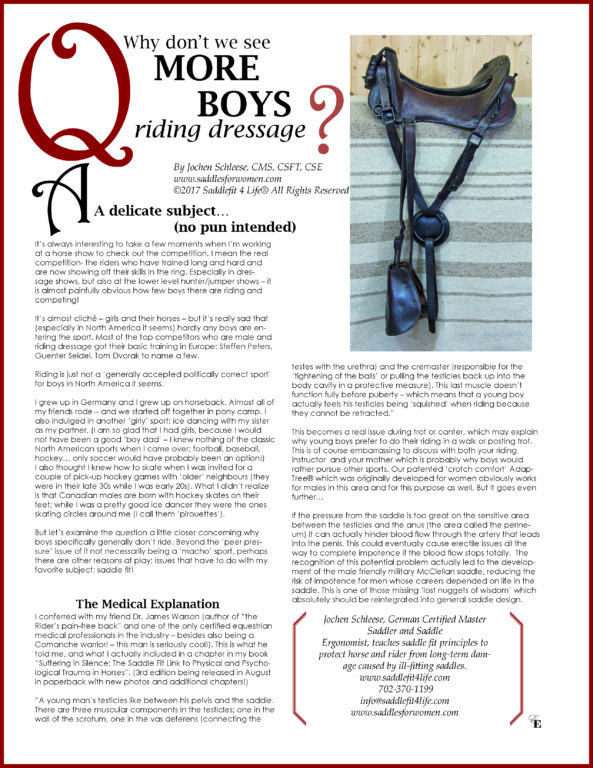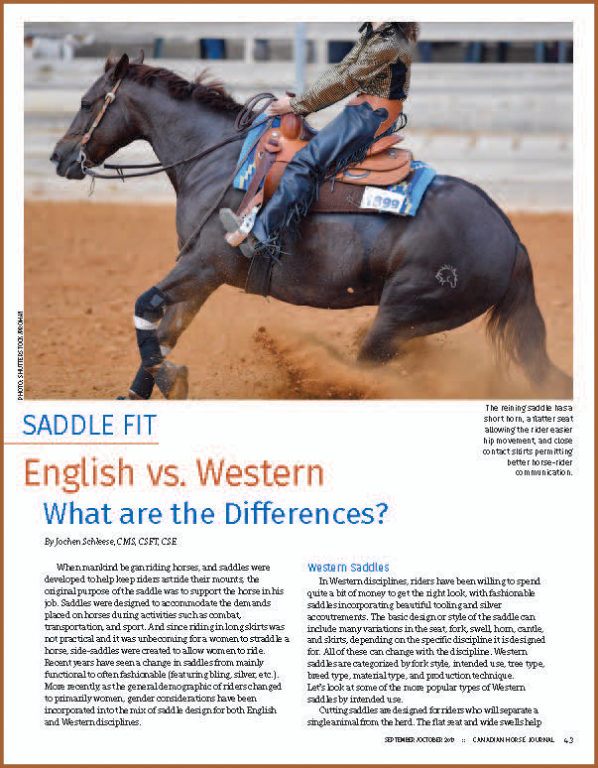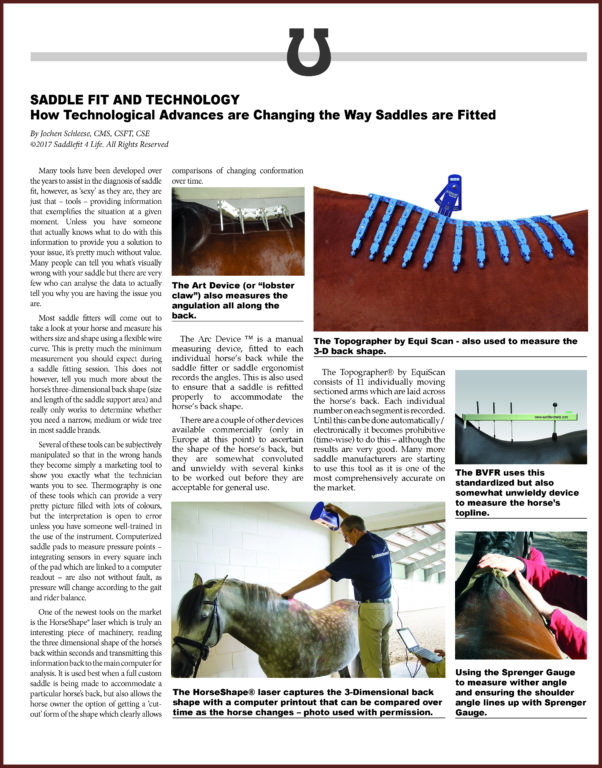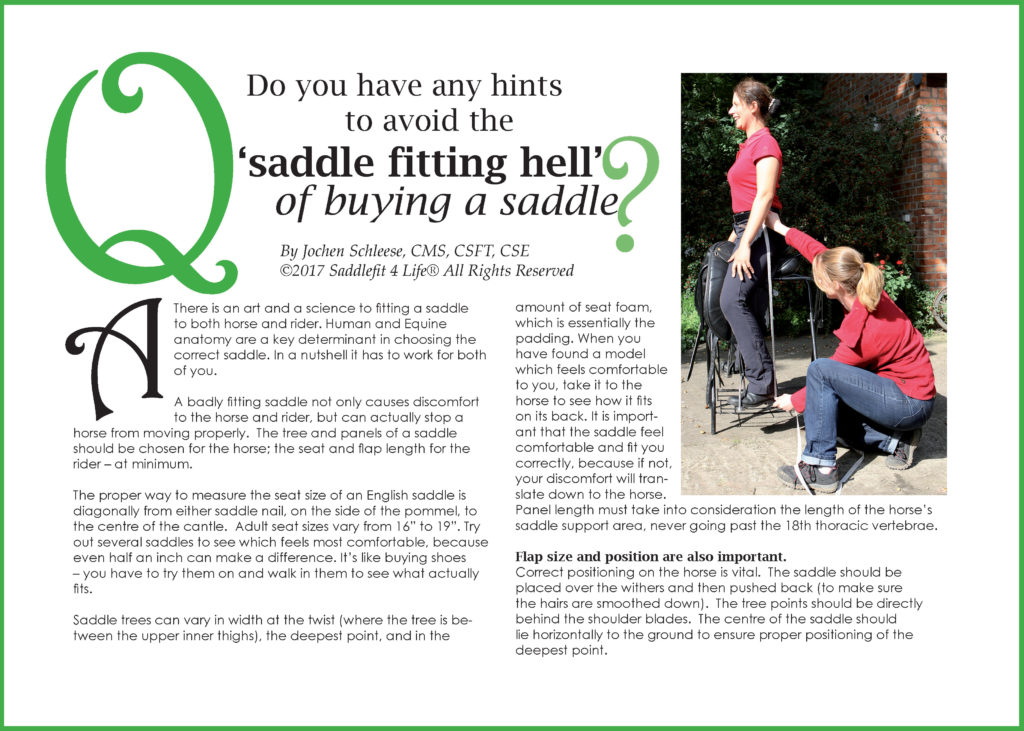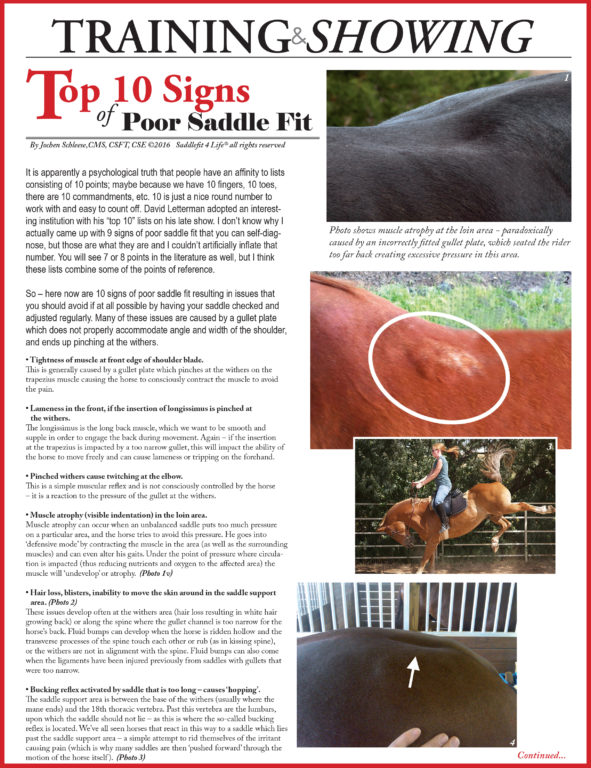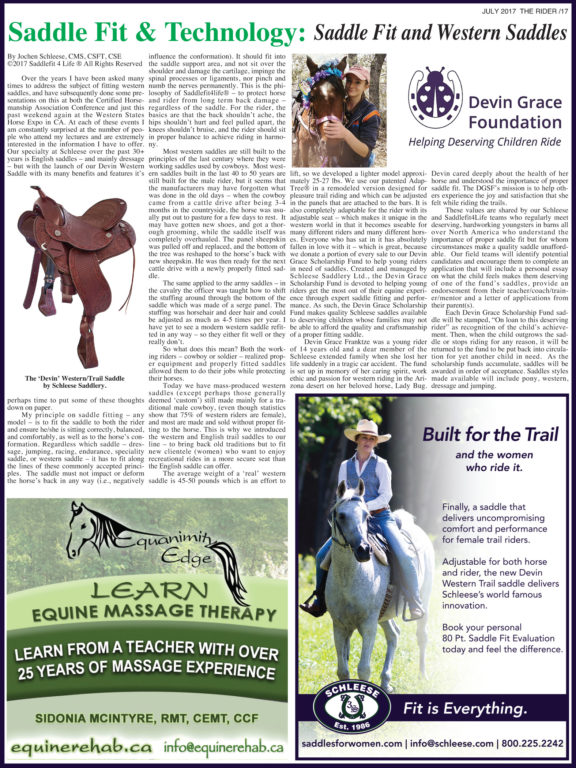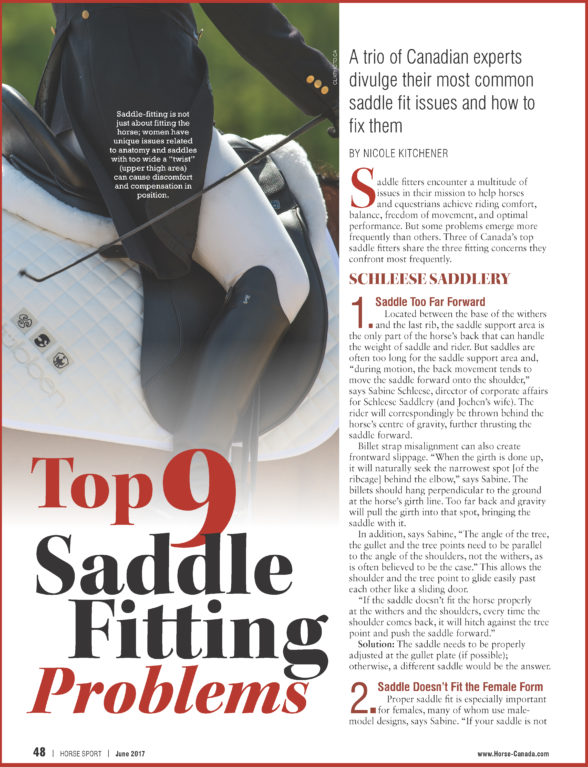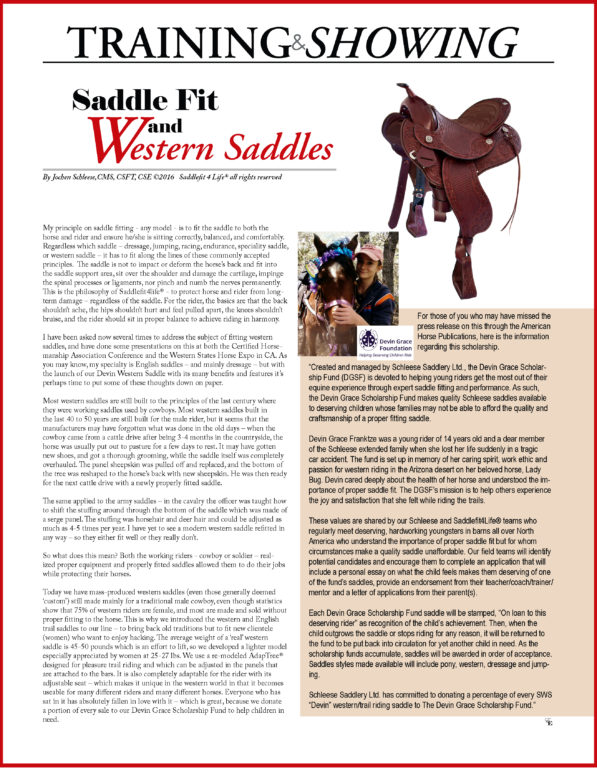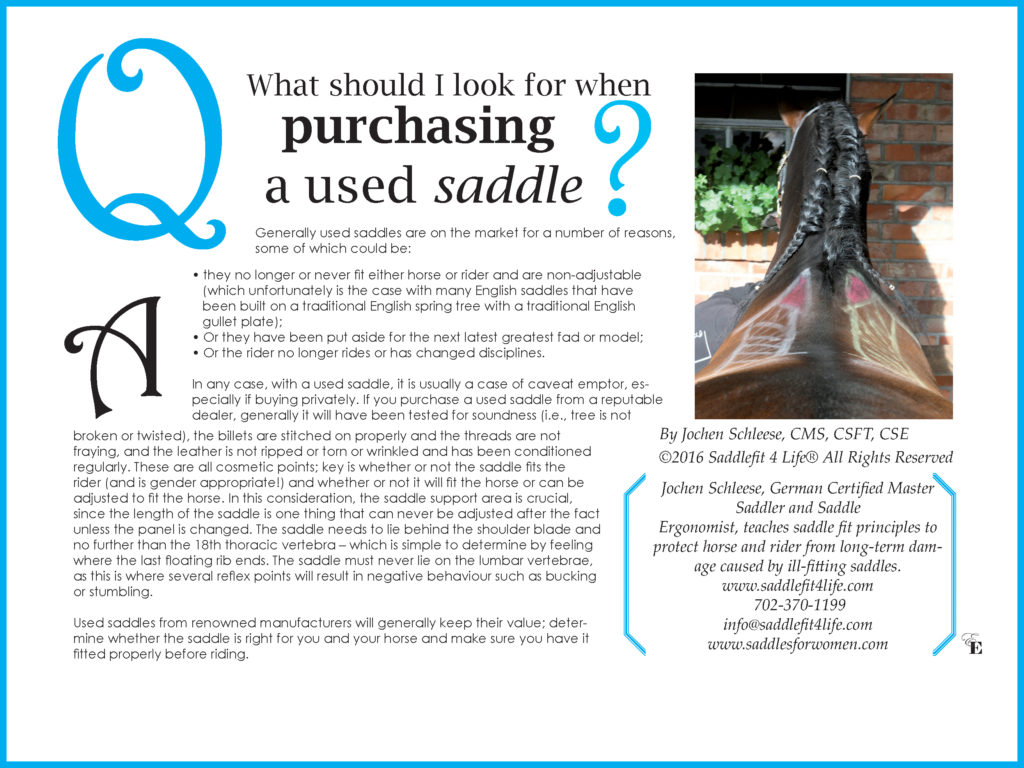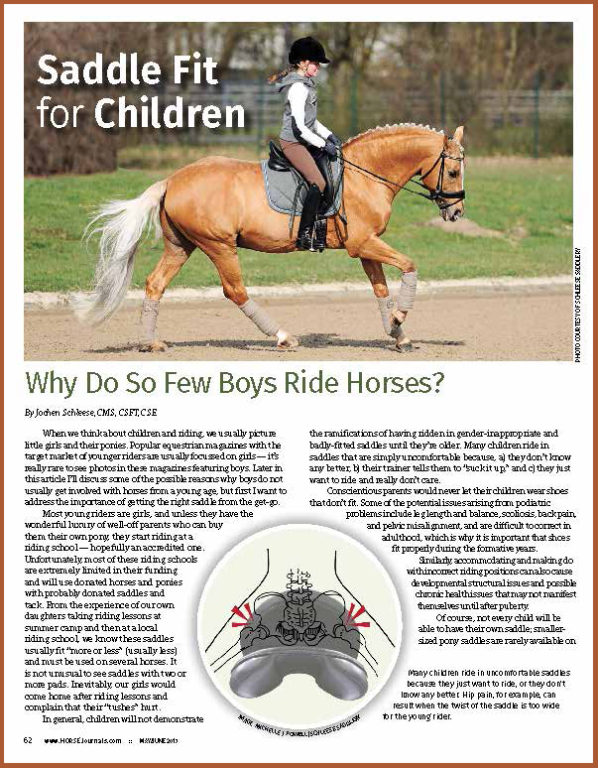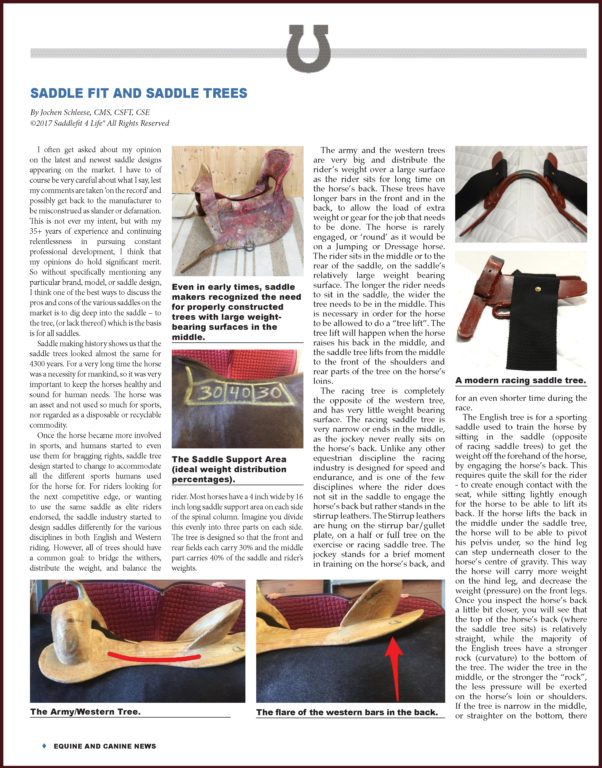My principle on saddle fitting – any model – is to fit the saddle to both the horse and rider and ensure he/she is sitting correctly, balanced, and comfortably. Regardless which saddle – dressage, jumping, racing, endurance, specialty saddle, or western saddle – it has to fit along the lines of these commonly accepted principles. The saddle is not to impact or deform the horse’s back and fit into the saddle support area, sit over the shoulder and damage the cartilage, impinge the spinal processes or ligaments, nor pinch and numb the nerves permanently. This is the philosophy of Saddlefit4life® – to protect horse and rider from longterm damage – regardless of the saddle. For the rider, the basics are that the back shouldn’t ache, the hips shouldn’t hurt and feel pulled apart, the knees shouldn’t bruise, and the rider should sit in proper balance to achieve riding in harmony…

